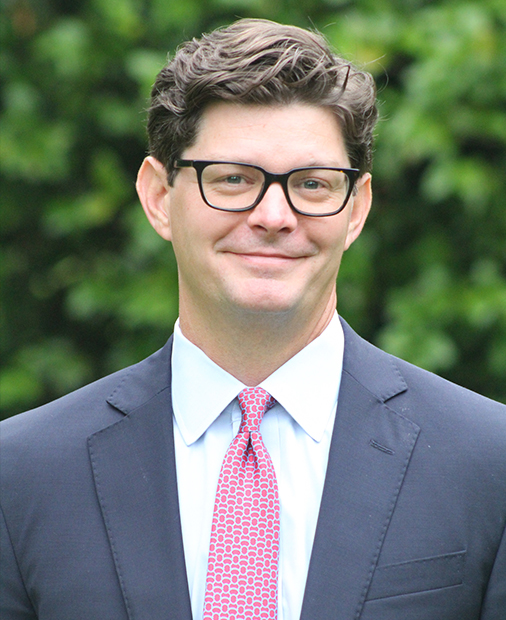Online Trademark Attorneys
Trademark Attorney Working With Clients in Denver, CO
If you're an entrepreneur, you know that protecting your intellectual property should be high on your list when it comes to safeguarding your company. However, as a successful business owner, you also know the steps and costs of filing a trademark in the U.S. can be expensive and arduous.
This conundrum can be even more overwhelming for new business owners who want to do everything possible to minimize the price of securing trademarks. They try to handle complicated tasks like trademark registration on their own, which can be a big mistake - especially when juggling the day-to-day tasks of running a business. You may be thinking, "But what about those set-it-and-forget-it services you can find online? All you have to do is plug in your info, and you're done." Using pre-made templates for trademark filing can be tempting, but doing so can leave you with inadequate protection and hurt you in the long run.
So, what is the easiest, most cost-effective route to consider that also minimizes legal risk? The truth is, before you spend money on an online filing service, it's best to consult with a trademark attorney working with clients in Denver, CO.
At Sausser Summers, PC, our experienced trademark attorneys can help you understand the trademark process step by step. We can even help with U.S. trademark filing, U.S. trademark responses, and U.S. trademark renewals at a price you can actually afford. That way, you can make an informed decision regarding your business without having to break the bank.
Sausser Summers, PC: Simplifying the U.S. Trademark Process
Hiring an attorney can be a daunting task, but at Sausser Summers, PC, our goal is to make the process as simple and seamless as possible for you. That's why we offer a straightforward checkout service. First, you choose your flat fee trademark service and fill out a short questionnaire. Then, we will contact you within 24 hours to discuss the details of our service. From there, one of our experienced trademark attorneys will get to work on your behalf.
Using a trademark attorney for filing in Denver, CO, can significantly increase your chances of a successful registration. The U.S. government recommends hiring a trademark attorney to help with your application, and our team of trademark lawyers is dedicated to meeting your needs. In fact, we help ensure your application is filed correctly the first time so you can get on with your life and avoid legal risks.
At Sausser Summers, PC, we work closely with our clients to understand their needs and provide them with sound professional advice. We never offer incomplete services, such as simply filing for registration, because that would leave you open to legal risks. You can rely on us to handle your intellectual property matters, and our flat fee services can help protect your business in a simple, straightforward, and affordable way. It's really that simple.
In terms of filing a U.S. trademark, we provide an easy three-step process to protect your intellectual property:
1. You provide your trademark info to our team via an online form.
2. Our team performs a comprehensive trademark search. This search ensures that no other marks will prevent you from registering your trademark in the U.S. Once performed, we'll send you a legal opinion letter that details our findings.
3. Sausser Summers, PC, files your U.S. trademark application. We are then listed as your Attorney of Record on file. From there, we'll provide ongoing updates regarding the status of your trademark as it works through the registration process.
The bottom line? At Sausser Summers, PC, we give both new and seasoned business owners an easy, efficient, cost-effective way to protect the one asset that sets them apart from others: their name.

The bottom line?
At Sausser Summers, PC, we give both new and seasoned business owners an easy, efficient, cost-effective way to protect the one asset that sets them apart from others: their name.
Do I Really Need a Trademark Attorney for Protecting My Business in Denver, CO?
It's not necessary to be a lawyer in order to apply for a trademark. Anyone can submit a trademark application to the U.S. Patent and Trademark Office (USPTO). However, registering a trademark involves more than just filling out a form. It's essential to conduct thorough research, accurately identify and clearly explain your trademark to ensure it receives adequate protection. And even after securing a trademark, you've got to monitor it consistently to make sure it's free from infringement.
The big takeaway here is that it's always a good idea to work with a trademark attorney to protect the intellectual property that you've worked so hard to establish. According to the Wall Street Journal, applicants are approximately 50% more likely to secure their trademark than people who file applications on their own. If your trademark application is rejected by the USPTO, you will need to revise and refile it, incurring additional filing fees. To avoid delays and extra costs, it is best to have a trademark lawyer help you get it right the first time.
Additional Benefits of Using a Trademark Attorney
Great trademark attorneys (like those you'll find at Sausser Summers, PC) will help with every step of filing and enforcing your trademark. Some additional benefits include the following:
Check to see if your proposed trademark is registered by another entity.
Conduct research to see if another business is using the trademark for which you're applying.
Provide advice and guidance on the strength of your trademark.
Draft and submit your trademark applications and application revisions.
Advice and guidance regarding trademark maintenance and protection.
Monitor the market for unauthorized use of your trademark.
Trademark enforcement to protect you against infringement.

Curious whether our trademark attorney services are right for you and your business? Contact Sausser Summer, PC, today. Let's talk about what you need, and how we can help.
What About Online Filing Services?
Online services, can provide you with basic assistance in filing your trademark. However, they will never be a legitimate substitute for an experienced trademark attorney helping clients in Denver, CO.

Although online filing services offer a step-by-step process, they take a one-size-fits-all approach to preparing legal documents. Even their advanced service only provides basic attorney assistance in completing your paperwork and helping with minor roadblocks. Online filing services' disclaimer highlights the many limitations of its services, including the fact that communications are not protected by attorney-client privilege. In addition, online filing services cannot provide advice, explanations, opinions, recommendations, or any kind of legal guidance on possible legal rights, remedies, defenses, options, selection of forms or strategies.
In other words, online filing services can offer you the necessary forms and point you in the right direction, but they cannot customize their services to your specific needs or help you with serious complications that may arise.
For the most comprehensive trademark service and protection, it's always wise to work with highly rated trademark lawyers, like you'll find at Sausser Summers, PC.
Understanding Trademarks Over Time
Trademarks in the U.S. can last indefinitely, but did you know that clients in Denver, CO can file a trademark online, only to lose protection in some circumstances? Trademarks differ from patents and copyrights in that they do not have an expiration date. However, to prevent the cancellation of a trademark, you must maintain it. To ensure that your trademark remains protected, you must actively use it in commerce and renew it with the USPTO every ten years.
The Lanham Act tells us that "use in commerce" is the legitimate use of a trademark in the ordinary course of trade. In other words, you cannot register a trademark solely to reserve the rights to it in the future. In most cases, a trademark must be used continuously in connection with the goods or services it is registered for.

Steps to Renew Your Trademark
Trademarks are registered with the USPTO and generally need to be renewed every ten years. However, there is one crucial exception that you should be aware of. Within the first ten years of owning a trademark, you must file for renewal between the fifth and sixth year from the date of your initial registration.
During this renewal period, you are required to submit a Section 8 declaration, a specimen that shows how the mark is being used, and pay the required fee. You can also apply for Section 15 Incontestability status, which can strengthen your trademark rights. This application, although not mandatory, can make it harder for others to challenge your ownership of the mark.
After the first renewal, which falls between the fifth and sixth year of ownership, the next renewal filing is due between the ninth and tenth year, and then every tenth year thereafter. In the ninth year you will need to file a Section 8 declaration, attesting to your use of the mark or excusable nonuse. You've also got to file a Section 9 renewal application before the end of the tenth year to keep your registration active.
It is worth noting that the USPTO provides a six-month grace period if you fail to renew your mark within the required time frame, but it is best not to rely on it. If you don't file within the grace period time limits, the USPTO will cancel and expire your mark.
By hiring trademark attorneys helping clients in Denver, CO, you can avoid the pitfalls and mistakes that can arise and cause you to lose your rights to the mark that represents it.
Losing Your Trademark Rights Through Abandonment
In the event that you stop using your trademark and have no plans to resume using it in commerce, it may be considered abandoned by the USPTO. This could result in the loss of your protective rights to the mark. Typically, a trademark is assumed to be abandoned if it has not been used for three years. However, you may be able to refute this presumption by providing evidence that you intend to use the mark again in the future.
Losing Your Trademark Rights Through Inappropriate Licensing
In addition to trademark abandonment, you should also be wary of improper licensing. It's important to remember that once you allow someone else to use your trademark, you must keep an eye on how they use it. You should monitor the products or services that feature your trademark to ensure that they meet consumers' expectations in terms of quality. Failure to do so can lead to a "naked" trademark license and the loss of your protective trademark rights.
How to Avoid Having to Refile Your Trademark
If you're wondering how you can avoid refiling your trademark, the answer is simple: file it correctly the first time around. Filing a trademark isn't inherently difficult, but when doing so, it's very important that certain aspects are filled out accurately in your application. If any information is missing or incorrect, the trademark application may be considered "void ab initio" or void from the beginning, requiring you to file again.
To avoid this, make sure that the information you provide in the application is accurate and complete, including the ownership of the trademark. For instance, if a corporation has multiple shareholders, it should not file under the President's personal name. The rightful owner should be the one/entity that ultimately controls the trademark and the associated goods/services.
It is also important to ensure that the goods and/or services description is precise. For example, if you sell electronic products, you should not file for research and development services despite having a research and development department. The goods/services description should reflect the goods/services you offer to customers, not the departments within your business.
Additionally, providing accurate dates of first use when filing for a trademark is crucial. The USPTO requires two dates to be specified - the date of first use anywhere and the date of first use in interstate commerce. Contact our trademark law office today to learn more about having accurate dates on your filing paperwork.


What Makes an Online Trademark Attorney Great?
At Sausser Summers, PC, we often get questions about how to distinguish run-of-the-mill consultants and others from great trademark attorneys. After all - when you're looking for an attorney to file or prosecute your business trademark, you should know their qualifications. Here are three ways you can separate the proverbial wheat from the chaff when it comes to trademark attorneys.
It's crucial to seek legal advice from a licensed trademark lawyer rather than relying on advice from non-professionals like trademark consultants. The USPTO even recommends hiring an attorney to help with the trademark process. Although trademark consultants may provide advice on trademark availability or name marketability, they cannot file the trademark for you or offer legal advice. According to the Rules of Practicing in trademark cases, "Individuals who are not attorneys are not recognized to practice before the Office in trademark matters." This rule applies to individuals who assist trademark applicants.
When searching for a trademark attorney, it's important to find someone with a strong background in trademark law. Look for an attorney who specializes in this area and has significant experience handling trademark-related cases. Avoid lawyers who don't have expertise in this field, as they may not be able to provide the guidance and support you need.
Ensure your attorney provides updates throughout the trademark registration process to avoid missing deadlines, including responding to any Office actions within six months. Failure to do so can result in trademark abandonment. The USPTO will only correspond with the listed attorney of record, so make sure your attorney keeps you informed.
In summary:
- Be sure you're using a licensed trademark attorney helping clients in Denver, CO.
- It's best to work with a trademark lawyer who has years of experience filing trademarks.
- Ensure that your trademark lawyer is willing to provide ongoing notifications relating to your trademark application process.

Trademark Attorneys Working Hard for You
Building your brand and gaining recognition for it is a significant achievement, and it's important to protect it. However, there are certain pitfalls and mistakes that can arise, causing you to lose your rights to the mark that represents it. By working with knowledgeable trademark attorneys, you can avoid these issues and file your trademark successfully.
With an A+ rating from the Better Business Bureau (BBB), Sausser Summers, PC, offers comprehensive guidance, strategic advice, and reliable representation for a variety of trademark matters. Our attorneys have years of real-world experience and, having registered countless trademarks with the USPTO, provide our clients with individualized representation when they need it most.
If you're looking for skilled, adept, and experienced counsel, look no further than our trademark law firm. Contact us today to schedule your initial consultation and learn how we can help you safeguard your brand.
Latest News in Denver, CO
Proposed wage-related bill hopes to bring relief to struggling Colorado restaurant owners
Adria Irahetahttps://www.denver7.com/news/local-news/proposed-wage-related-bill-hopes-to-bring-relief-to-struggling-colorado-restaurant-owners
The Restaurant Relief Bill would align tipped-wage rates for food and beverage workers.DENVER, Colo. — For the last four years, Roy Benoit and wife Casey Keller have prided themselves on serving up good food and good memories at Wendell’s Diner on Tennyson Street in Denver.“It's not a clock-in-clock-out type of gig, but I wouldn't trade it for the world,” Benoit said.A colorful letterboard above the bar bears a list of Wendell’s regulars — some don’t even live in the state, but t...
The Restaurant Relief Bill would align tipped-wage rates for food and beverage workers.
DENVER, Colo. — For the last four years, Roy Benoit and wife Casey Keller have prided themselves on serving up good food and good memories at Wendell’s Diner on Tennyson Street in Denver.
“It's not a clock-in-clock-out type of gig, but I wouldn't trade it for the world,” Benoit said.
A colorful letterboard above the bar bears a list of Wendell’s regulars — some don’t even live in the state, but they make it a point to stop by every time they’re in town.
“We've gotten to know these people, and we've become a part of this community, and it's been phenomenal to be able to do that,” Benoit said.
In a few weeks however, Wendell’s Diner anticipates finding itself on the growing list of Denver restaurants that have gone out of business.
“It's like every week there's a couple places closing and those are people, and those are lives,” he said. “[Our bartender] has a husband, and she has kids. When we go away, she has to find another job as well. You know, you don't see those stories. You just see, oh well, that place is gone.”
A new bill introduced this week by Reps. Steven Woodrow and Alex Valdez and Sen. Judy Amabile hope to ease the burden for restaurant owners like Benoit.
House Bill 1208, also known as the Restaurant Relief Bill, would make it so restaurants are only paying out a portion of tipped workers’ paychecks while tips make up the difference.
The bill will not decrease the non-tipped wage in any part of Colorado.
The Colorado Restaurant Association said this will save businesses money or let them allocate it elsewhere.
“It'll allow restaurant owners to be able to give more of their money to the back-of-the-house workers, which continually get left behind every time we see a minimum wage increase,” said Colorado Restaurant Association President and CEO Sonia Riggs.
On Friday, the Colorado Chamber of Commerce announced its support of the bill, which would particularly help restaurant owners in places like Denver where the minimum wage is higher.
“When we passed the minimum wage local government bill several years ago, we ended up unintentionally not kind of correcting the ratio of tip credit to minimum wage. And we need to keep that the same, because restaurants are very slim margin businesses, and they really use that money to both provide for other employees within the restaurant, but more importantly, to keep their small business going,” said Rep. Valdez.
According to data from the Colorado Chamber of Commerce, 92% of restaurants raised their menu prices, 68% reduced staff or cut hours and many have struggled to keep up with wage increases, especially for back-of-house employees so far in 2025.
About 80% of restaurant closures in Colorado have happened in Denver.
“It’s changing our landscape of a vibrant community into one where we're seeing doors shut every day, and it's just tragic,” Riggs added
Owners like Benoit said the bill is a step in the right direction, but their time feels like it is running out on Tennyson Street.
“It might be past the point where it makes a difference for us, and I know a lot of places, a lot of smaller places like us, sometimes things are a little bit too, little too late," he said.
The first hearing on the Restaurant Relief Bill will be held on Feb. 20.
Coloradans making a difference | Denver7 featured videos
Driver hit by Loveland Pass avalanche says slide 'tossed' his pickup truck 'like a toy' Project HairCare: Bringing mental health service to Black barbershops and salons Littleton's big question: Should the city allow denser housing options? Coloradans turn to independent grocery stores amid King Soopers strike
Denver7 is committed to making a difference in our community by standing up for what's right, listening, lending a helping hand and following through on promises. See that work in action, in the videos above.
Copyright 2025 Scripps Media, Inc. All rights reserved. This material may not be published, broadcast, rewritten, or redistributed.
Snow bands to sweep Colorado, travel disruptions possible
KUSA.comhttps://www.9news.com/article/weather/weather-impact/snow-denver-forecast-weather/73-af9d4317-0e16-40d9-a3ca-3675c4e5a64f
Mountain snow will increase Monday afternoon, with periods of heavy snow and snow squalls possible. Expect impacts to I-70 traffic in Colorado.DENVER — The 9NEWS Weather Impact Team has issued a Weather Impact Alert due to the potential for highly disruptive snow squalls in Colorado's mountains and quick bursts of snow in the Denver area.Snow showers and snow bands will begin developing shortly after sunrise Monday, but the best chance for snow impacts on the roadways will likely come after dark on Monday. The snow will l...
Mountain snow will increase Monday afternoon, with periods of heavy snow and snow squalls possible. Expect impacts to I-70 traffic in Colorado.
DENVER — The 9NEWS Weather Impact Team has issued a Weather Impact Alert due to the potential for highly disruptive snow squalls in Colorado's mountains and quick bursts of snow in the Denver area.
Snow showers and snow bands will begin developing shortly after sunrise Monday, but the best chance for snow impacts on the roadways will likely come after dark on Monday. The snow will likely end before sunrise Tuesday.
Narrow bands of heavier snow embedded in the lighter flurries will also be possible. These bands will boost the snow totals in the areas in which they occur. A quick 1-2" in the Denver area is possible Monday afternoon, which could make things messy Monday evening in particular.
In general, there is very little moisture available, so the potential for accumulation will be on the lighter side, with about a half inch of snow possible from Fort Collins to Denver – except for the potential for localized banding, similar to Saturday's snow.
Related Articles
The tricky part is that the number of bands, how long they will last and where exactly they will develop can't be predicted ahead of time. All we know is that they will likely be very short-lived but frequent enough to forecast a general spread of a half inch to 2 inches of snow across the entire Front Range and adjacent plains, with localized spots getting more than 2 inches.
Mountain snow
Snow in Colorado's mountains continues throughout most of the day Monday and into Monday night.
Mountain snow will increase Monday afternoon, with periods of heavy snow and snow squalls possible. Expect snow squalls to impact Interstate 70 traffic in the mountains, especially between 3 p.m. and 9 p.m. Monday.
This round of snow will be focused along the Interstate 70 corridor and parts to the north. Travel near the Eisenhower-Johnson Memorial Tunnels, where 6-10 inches of snow is in the forecast, will likely be slow, hazardous and full of delays or closures from morning to night.
Berthoud Pass and Rabbit Ears Pass are forecast to get even more snow, with 10-24 inches possible by Tuesday morning.
After this week's Arctic freeze, we'll warm up and dry out later this week with highs back in the 50s and 60s next weekend.
Credit: 9NEWS
Credit: 9NEWS
Denver forecast
Credit: 9NEWS
Winter Storm Warning: Here's how much snow Colorado could get this weekend
KUSA.comhttps://www.9news.com/article/weather/weather-impact/snow-mountains-colorado-denver-forecast/73-fd1aa66e-5e55-4e32-a0fb-da5d91414b4b
Winter Storm Warnings are in effect across Colorado's mountains with 1-3 feet of snow possible with hazardous driving conditions forecasted.Credit: KUSAFuturecast for 2-14-25.DENVER — Winter Storm Warnings and Winter Weather Advisories are in place for most of Colorado's mountains through Saturday.Snow accumulations up to 3 feet are possible in the mountains. The National Weather Service said travel could be very difficult to ...
Winter Storm Warnings are in effect across Colorado's mountains with 1-3 feet of snow possible with hazardous driving conditions forecasted.
Credit: KUSA
Futurecast for 2-14-25.
DENVER — Winter Storm Warnings and Winter Weather Advisories are in place for most of Colorado's mountains through Saturday.
Snow accumulations up to 3 feet are possible in the mountains. The National Weather Service said travel could be very difficult to impossible during the commutes on Friday and Saturday.
The significant winter storm will deliver heavy and widespread snow with a 6-16 inches in some of the mountain towns by Saturday night and 2-3 feet of snow on some of the mountain passes and ski areas.
Colorado will see a break in the weather for most of the day on Sunday, but snow from the next storm system will likely show up in the mountains after sunset.
Credit: KUSA
Denver, Front Range forecast
Highs will be near 50 degrees in the Denver area on Friday with a mix of clouds and sunshine. Then, a wave of mix rain and snow showers moves through after 3 p.m.
A few isolated spots could pick up a little rain or even some measurable snow. The highest odds for accumulating snow will be on the east and south sides of the Denver metro area, where there's a bit more lift and instability.
The Denver area will remain chilly on Saturday with another chance for light snow showers again between 5 p.m. and midnight. In total, some spots on the Front Range could get an inch or two of snow accumulation by Sunday morning although most will likely see less than a half inch or nothing at all.
Colorado's next storm system will likely show up in the mountains after sunset late Sunday. That storm will potentially bring the Denver area some snow impacts on Monday night and possibly Tuesday morning.
At this point, the snow looks like a minimal impact but Denver could see its temperatures drop down close to zero degrees again by Wednesday morning. Light snow could continue for a few days as well, though with generally lighter accumulations.
RELATED: Big mountain snow continues with a late mix possible in Denver
Denver weather forecast
Credit: KUSA
Report: Most Colorado hospitals spent more on community benefits than they received in tax breaks
Meg Wingerterhttps://www.denverpost.com/2025/02/14/colorado-hospital-tax-exemption-community-benefit/
Most hospital systems in Colorado spent more to benefit their communities than they received in tax breaks in 2022, but state officials aren’t sure if that will be the case in more recent years.Nonprofit hospitals have to provide community benefits in exchange for their tax exemptions, but the Internal Revenue Service doesn’t require a specific spending threshold. The definition of community benefit is broad, and can include uncompensated care; assisting patients with their economic and social needs; promoting healthy beha...
Most hospital systems in Colorado spent more to benefit their communities than they received in tax breaks in 2022, but state officials aren’t sure if that will be the case in more recent years.
Nonprofit hospitals have to provide community benefits in exchange for their tax exemptions, but the Internal Revenue Service doesn’t require a specific spending threshold. The definition of community benefit is broad, and can include uncompensated care; assisting patients with their economic and social needs; promoting healthy behavior; the difference between the cost of care and what Medicaid pays; and other needs communities identified.
RELATED: Colorado hospitals had lowest patient care profits in over a decade
Banner Health, Children’s Hospital Colorado, Denver Health, Intermountain Health and UCHealth spent more on community benefit than they received through foregone taxes in Colorado. AdventHealth and CommonSpirit Health spent less than the value of their tax breaks, according to a new report from the Colorado Department of Health Care Policy and Financing.
That year may be an outlier, because investment markets performed poorly that year, meaning that hospitals didn’t benefit from foregone taxes on their earnings to the extent that they likely did when the market recovered in 2023, the report said. Still, the data suggests hospitals are fulfilling their mission to provide community benefit, Kim Bimestefer, the department’s executive director, said Thursday.
“They’re spending almost double” the value of the tax exemptions, she said.
Nonprofit hospitals in the state spent about $1.2 billion, or 7.2% of their revenues, on community benefits in 2022, while receiving about $326 million in tax exemptions. If they count the amount that Medicaid pays below the cost of providing care as part of their community benefit, the total would rise to almost 15% of their revenues.
When counting Medicaid shortfall, which the IRS allows, AdventHealth and CommonSpirit Health also exceeded the value of their tax exemptions, said Tom Rennell, senior vice president of financial policy and data analytics at the Colorado Hospital Association. The data don’t account for hospitals continuing to offer unprofitable services that their patients need, such as maternity care, he said.
“Their benefit to the community is keeping their services open,” he said.
About $722 million went to “provider recruitment, education, research and training,” while the 46 nonprofit hospitals spent about $284 million on charity care. Almost one-third of the charity care expenses came from Denver Health, and three-quarters of the education and research spending happened at UCHealth hospitals.
Box: Value of hospital systems’ tax exemptions in 2022:
Source: Colorado Department of Health Care Policy and Financing Hospital Community Benefit report
Box: Nonprofit systems’ community benefit in 2022, as a percentage of the expense of operating their hospitals
Without Medicaid underpayments:
With Medicaid underpayments included:
Source: Colorado Department of Health Care Policy and Financing Hospital Community Benefit report
To keep their tax exemptions, nonprofit hospitals also have to assess their communities’ needs every three years. Of the 46 that submitted data to the state, 39 said behavioral health care was a top need; 27 listed access to care; and 18 said chronic conditions were a major problem.
Priorities didn’t always clearly match spending, though: 15 hospitals said behavioral health was a top concern, but didn’t report any community benefit spending on it. Only about 3% of all community benefit spending went toward behavioral health, said Nancy Dolson, the department’s special financing division director.
“That reflects an opportunity to better reflect the voice of their communities,” she said.
Colorado didn’t require hospitals to break out behavioral health as a separate type of community benefit until 2023, so some likely listed their investments under a different category, Rennell said. Some also added psychiatric beds, which are an investment in behavioral health, but not one they can report as community benefit, he said.
Community benefit “isn’t for providing services to patients,” he said. “If a hospital were to have added beds for behavioral health, that doesn’t show up.”
Sign up for our weekly newsletter to get health news sent straight to your inbox.
Byron G. Rogers Federal Building and U.S. Courthouse, Denver, CO
U.S. General Services Administrationhttps://www.gsa.gov/real-estate/historic-preservation/explore-historic-buildings/find-a-building/byron-g-rogers-federal-building-and-courthouse
Location: 1961 Stout St, Denver, CO 80294HistoryIn the years following World War II, the population of Denver, Colorado, grew rapidly as numerous federal agencies located to the city. The existing federal building could no longer accommodate growing space needs, and the government began planning for a new complex to house the U.S. District Court and the U.S. Court of Appeals for the Tenth Circuit. In 1959, the U.S. General Ser...
Location: 1961 Stout St, Denver, CO 80294
History
In the years following World War II, the population of Denver, Colorado, grew rapidly as numerous federal agencies located to the city. The existing federal building could no longer accommodate growing space needs, and the government began planning for a new complex to house the U.S. District Court and the U.S. Court of Appeals for the Tenth Circuit. In 1959, the U.S. General Services Administration (GSA) selected the accomplished Denver architectural firm James Sudler Associates as the lead designer, with another skilled Denver firm, Fisher & Davis, assisting. James Sudler designed numerous Modern buildings in the Denver area, including the exuberant Church of the Risen Christ and the Denver Museum of Art (with Gio Ponti).
In 1961, the federal government allotted $687,000 to purchase the downtown Denver site, bound by Champa, Stout, Nineteenth, and Twentieth streets, adjacent to the existing post office and custom house. Officials appropriated an additional $20 million in 1962 for the construction of the complex, with groundbreaking occurring the same year. The first occupants moved into the building in 1965. In 1984, the complex was named to honor Byron G. Rogers (1900-1983), who represented Colorado in the U.S. House of Representatives from 1951 to 1971. Rogers was instrumental in securing the original funds for the courthouse.
The trial of Timothy McVeigh, the bomber responsible for the 1995 attack on the Alfred P. Murrah Federal Building in Oklahoma City, was held at the Byron G. Rogers Federal Building and U.S. Courthouse in 1996 and 1997. To find an impartial jury, the court moved the case to Denver, where McVeigh was tried and convicted.
In 1999, GSA initiated alterations to the entrance to accommodate security needs. Local preservationists asked GSA to consider the potential significance of the complex before commencing work that would alter character- defining features. As a result, GSA developed a sensitive design that retained these important elements. The unexpected public interest led GSA to commission a study to better understand the architecture and context of buildings from this era. In 2003, GSA published Growth, Efficiency, and Modernism: GSA Buildings of the 1950s, 60s, and 70s. Updated in 2005, the publication has received several awards and strengthened GSA’s reputation as a leader in the preservation field.
Architecture
The Byron G. Rogers Federal Building and U.S. Courthouse consists of three distinct components: an 18-story office tower, a low courthouse, and a landscaped plaza. This three-part design combination was typical of Modern architecture and is perhaps best exemplified by the United Nations complex in New York City. Sudler’s design for the Byron G. Rogers Federal Building and U.S. Courthouse is an excellent example of Formalism, a style of Modern architecture that incorporates flat rooflines, columnar supports, symmetry, high-quality materials, and works of art.
The tall office building has an unusual, angular footprint. While the center sections measure 103 feet in width, the ends are only 80 feet wide. The street level is clad in white marble panels, as are the narrow unfenestrated elevations of the building. Upper stories of the primary elevations exhibit an alternating rhythm of beige pre-cast concrete panels and projecting windows. Public spaces on the interior have marble wainscoting and terrazzo floors with bronze dividers.The low, rectangular courthouse derives its form from two nearby federal buildings that inspired Sudler: the 1931 U.S. Custom House and the 1916 Byron R. White U.S. Courthouse (the former main post office). Sudler’s design alludes to earlier classical architecture in scale, form, and color of materials. The building is clad primarily in pre-cast aggregate stone panels with a light tan color. On the Champa Street elevation, the panels have profiles that evoke the footprint and windows of the office tower. White marble is visible in bands at the top and bottom of the courthouse. Windows are oriented vertically and in pairs, running in tall bands divided by thin strips of marble. The Stout Street elevation features a metal art screen, a common element of Formalism, over large windows; the screen also serves to control direct sunlight on the interior. Like the office tower, interior public spaces of the courthouse have marble wainscoting and terrazzo floors. The courtroom walls are finished in panels of alternating polished light and dark woods with prominent grain patterns.
Public art is a critical component of the complex. GSA allotted $50,000 of the original construction budget for works of art. Pieces include the large bronze Great Seal of the United States and a stylized mahogany carving called Justice, Freedom, and the Release from Bondage, both by Denver sculptor William Joseph. A bronze bas-relief art column entitled Federal Services by Edgar Britton is located within the landscaped plaza. The column resembles a totem pole and contains carvings inspired by Native American art. The cylinder originally acted as a canopy support, but was moved when the entrance was reconfigured. In 2006, Jim Campbell created a dynamic light installation along the Champa Street elevation, with a companion piece in the main lobby.
In 1999, GSA initiated a $1.65 million project as part of its First Impressions program. The plaza and entrance configuration were modified to improve security screening and make the facility more efficient and welcoming to employees and visitors. The inviting new plaza skillfully and unobtrusively incorporates security features as well as elements of the architects’ design that were never constructed. The existing covered walkway, or canopy, was retained and a new glass pavilion was added at the convergence of the office tower and the courthouse to facilitate security screening. New lighting and a restored water feature were also included in the design. The project received a Standing Ovation Award from Historic Denver, Inc., in 2001 and a 2006 Honor Award from the Denver Chapter of the American Institute of Architects.
The low courthouse building underwent a full modernization between 2002 and 2006. The project included upgrades to mechanical systems, reconfiguration of interior spaces, and asbestos abatement.
Significant Events
Building Facts
Poster Download
Disclaimer:


 Sausser Summers, PC
Sausser Summers, PC
 Call
us (843) 654-0078
Call
us (843) 654-0078